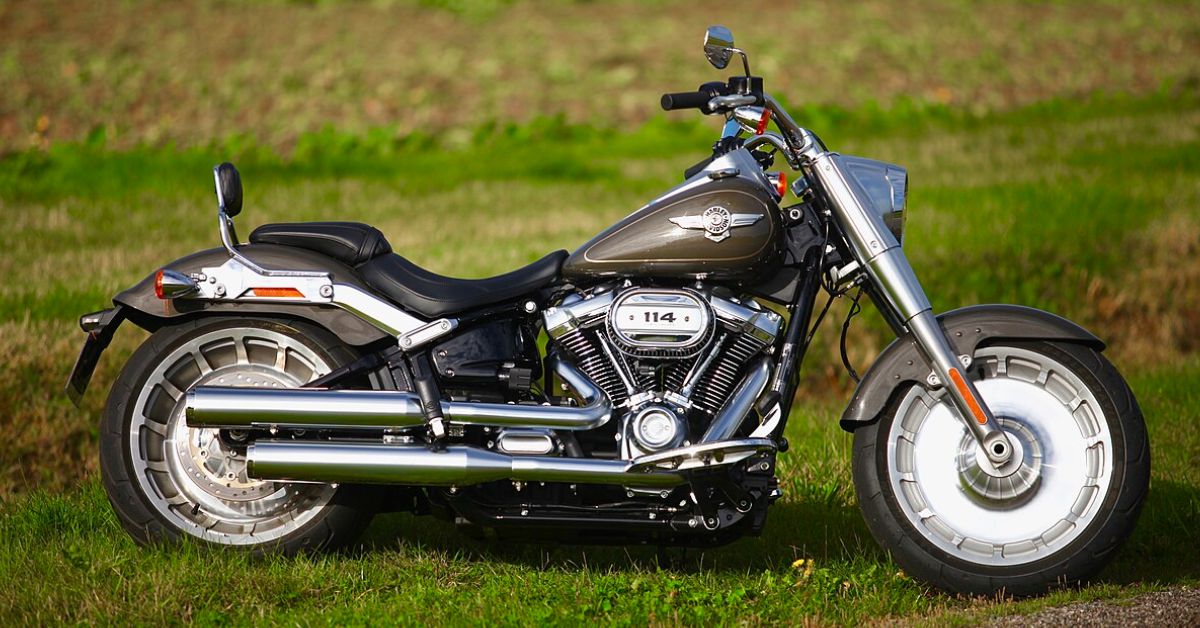Few motorcycles have managed to blend brute strength, timeless design, and pop culture appeal quite like the Harley-Davidson Fat Boy. Since its debut in 1990, the Fat Boy has stood as a symbol of American motorcycling muscle—bold, unapologetic, and instantly recognizable. Whether thundering down highways or stealing scenes in Hollywood blockbusters, the Fat Boy has earned its place as one of Harley-Davidson’s most iconic creations.
🛠️ Birth of a Heavyweight
The Fat Boy was born in the late 1980s, a time when Harley-Davidson was reinventing itself after the turbulent AMF years. Legendary designer Willie G. Davidson, grandson of one of Harley’s founders, teamed up with Louie Netz to create a motorcycle that would break the mold. Their goal was to craft a factory custom bike that paid homage to the rugged military motorcycles of the 1940s and 1950s, but with a modern twist.
The prototype was unveiled at Daytona Bike Week in 1988, and the response was electric. By 1990, the Fat Boy was officially launched as part of Harley’s Softail lineup, coded as FLSTF. Its name, often misunderstood, was simply a nod to its wide, solid build—not a reference to atomic bombs as some urban legends suggest.
💪 Design That Commands Attention
The Fat Boy’s design is unmistakable. Its solid-cast disc wheels, wide front forks, and beefy stance give it a muscular silhouette that screams power. The bike’s low-slung profile and minimalist chrome accents create a look that’s both industrial and elegant. It’s a cruiser that doesn’t try to be flashy—it simply dominates with presence.
Over the years, Harley has refined the Fat Boy’s design while staying true to its roots. The 2018 redesign introduced a new Softail frame with Showa suspension and the powerful Milwaukee-Eight engine, available in 107 and 114 cubic inch variants. These updates improved handling and performance while preserving the bike’s signature look.
⚙️ Power and Performance
The Fat Boy has always been about torque and road presence. Early models featured the Evolution engine, followed by the Twin Cam in the 2000s, and eventually the Milwaukee-Eight in recent years. The latest Fat Boy 114 boasts a 1,868cc engine that delivers 155 Nm of torque at 3,250 rpm and a top speed of 177 km/h. It’s not just fast—it’s thunderous.
Despite its weight (a hefty 317 kg), the Fat Boy handles surprisingly well, thanks to its refined suspension and low center of gravity. The six-speed manual transmission and dual-channel ABS make it both powerful and safe, while the hidden rear monoshock keeps the lines clean and the ride smooth.
🎬 Hollywood Fame and Cultural Impact
The Fat Boy’s fame isn’t limited to the road—it’s a bona fide movie star. Its most iconic appearance came in Terminator 2: Judgment Day, where Arnold Schwarzenegger’s T-800 rode a Fat Boy through high-speed chases and explosive action scenes. That moment cemented the bike’s status as a symbol of cool, rebellion, and unstoppable force.
Beyond cinema, the Fat Boy has become a cultural icon. It represents freedom, masculinity, and the open road. It’s the kind of bike that turns heads at every stoplight and draws admiration from riders and non-riders alike. Special editions, like the 15th Anniversary model with Screamin’ Eagle upgrades, have only added to its mystique.
🧠 Engineering Meets Emotion
What makes the Fat Boy truly special is its ability to connect with riders on an emotional level. It’s not just a machine—it’s a statement. The rumble of its engine, the feel of its throttle, and the way it hugs the road all contribute to an experience that’s visceral and unforgettable.
Harley-Davidson has always understood that motorcycles are more than transportation—they’re lifestyle choices. The Fat Boy embodies that philosophy. It’s for those who want to ride with authority, who appreciate craftsmanship, and who aren’t afraid to stand out.
🏁 Final Thoughts
The Harley-Davidson Fat Boy is more than a motorcycle—it’s a legend. From its bold design and powerful engine to its cultural impact and emotional resonance, it has earned its place in the pantheon of great bikes. It’s a cruiser that doesn’t compromise, a heavyweight that moves with grace, and a symbol of everything Harley-Davidson stands for.
Whether you’re a seasoned rider or a dreamer with a poster on your wall, the Fat Boy speaks to something deeper: the thrill of the ride, the call of the open road, and the timeless allure of two wheels and a roaring heart.
